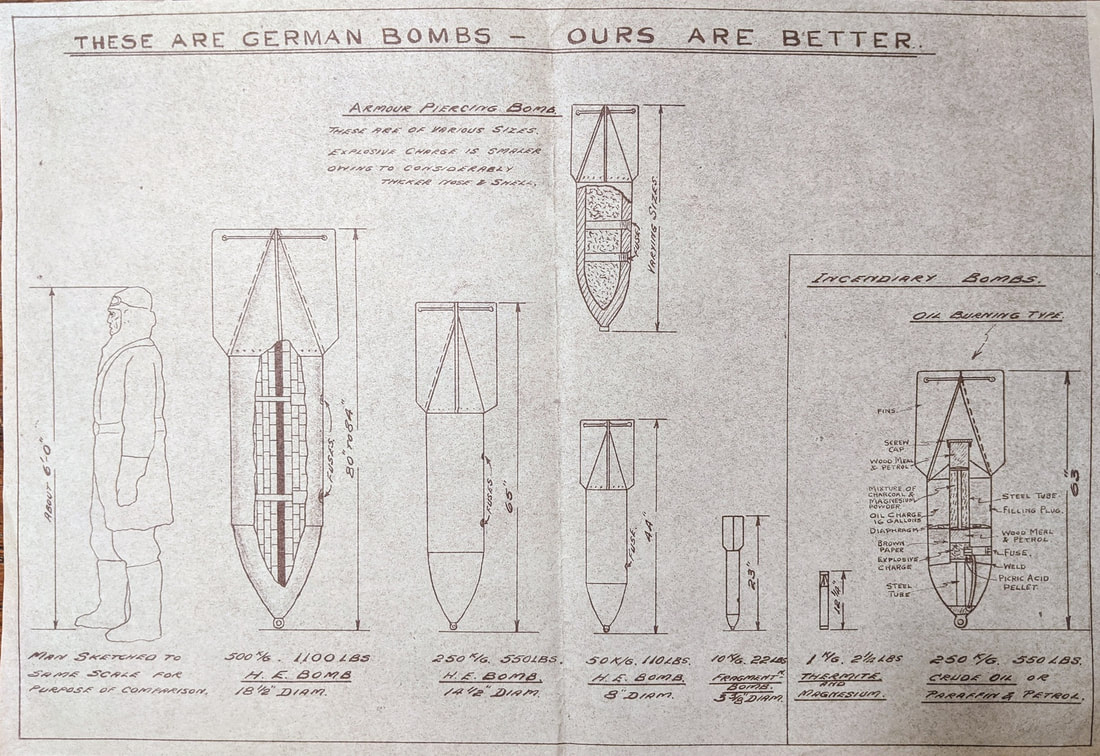|
An interesting chart detailing the common bombs dropped by the Luftwaffe during the second world war. Probably used as a teaching aid (with the cheeky dig that "Ours Are Better"...). Thanks to George for sharing.
The German air force dropped mainly High Explosive (HE) and Incendiary Bombs (IB) plus some anti-personnel bombs (such as the butterfly cluster bombs) on Britain during the second world war. HE bombs were used for their destructive force and blast effect on buildings; IBs were intended to caused major fires. An aircraft might contain both types. Initially, the more common German HE ordnance were the 50kg and 250kg bombs. Bombs types were defined by SC, SD or PC, for example, a SC250 would be a general purpose 250kg Sprengbombe Cylindrich. HE bombs would also be fitted with different fuses - short or long delay. The majority of bombs dropped on Britain during the war were of the SC type. The largest 1,100lb shown below equates to 500kg (not shown are the 1,000kg 'Hermann' or 1,800kg 'Satan'). The last bomb on the chart is a 250kg oil bomb (German: Flammenbombe). The armour piercing bomb shown was prefixed SD (Sprengbombe Dickwandig). They came is various sizes from 50, 250, 500 to 1,700kg and due to their penetration qualities were used primarily against ships and concrete emplacements. The PC (Panzerbombe Cylindrich) armour piercing bomb had a thicker nose and shell with only 20% of the total weight being explosive; these were used against ships and fortifications. To read more about how unexploded bombs were dealt with see Chris Ransted's Bomb Disposal in World War Two. To learn more about the various bombs dropped by the Luftwaffe see Air Dropped Ordnance.
0 Comments
Your comment will be posted after it is approved.
Leave a Reply. |
Please support this website's running costs and keep it advert free
Categories
All
Archives
June 2024
|
|
|
Copyright © 2018–2024
|

 RSS Feed
RSS Feed